Acer Swift 1 (SF113-31) review – metal and style in one budget solution
We can without a doubt say that the Acer Swift 1 series doesn’t include premium machines with powerful hardware but it deserves our attention because it features many other pros. We are going to focus on them in our review.
The model we used for the purposes of our review is Acer Swift 1 (SF113-31) and is characterized by a very good 13.3″ display with an IPS matrix, CPU that handles well our everyday tasks in the office, battery ensuring above 10 hours mobility and all of that combined in a metal chassis with very good built quality and looks.
You can find the available models here: http://laptopmedia.com/series/acer-swift-1-sf113-31/
Contents
Retail package
The laptop came well packed in a box. The package includes an AC adapter, model W15-045N4B, providing 19V voltage and 2.37A currency. Here, we also found user manuals and the tablet itself.

Design and construction
The laptop is equipped with a sturdy aluminum-magnesium chassis which is placed in an aluminum corpus. The surface is smooth and nice to touch, comes in silver and it is not stained by fingerprints. The bottom part of the laptop is a metal lid realized by nine metal screws and offers easy access to the hardware components. In addition, the construction is made firm and stable. Acer Swift 1 is at the same time light and compact, extremely comfortable to be carried around and holding it with one hand. Its weight is just 1.36 kg, while the thickness – 16 mm.
With its new looks, Acer Swift 1 offers one comfortable and nice contemporary mobile computer. The laptop sports a 13.3″ display with an IPS matrix providing much better viewing angles. A thin rubberized strip is located around the display fitting very well into the corpus and sealing the upper lid. An engraved metal Acer logo is placed on the lid giving the laptop the looks of a high-quality mobile machine.
The hinges are made tightened and thick, firmly keeping the display position. It doesn’t change even during mild shocks. When closed, the lid sticks firmly to the construction and there are no visible gaps and twists on the display. In addition, the laptop features a fingerprint sensor.
The keyboard is of Island Style type. Overall, it is well constructed, the buttons are comfortable and nice to touch. The laptop also has key backlight. The touchpad is large and comfortable to work with. The touchpad buttons have distinct and dense key travel when pressed. What’s more, the laptop is equipped with an HD camera.
One last aspect worthy of attention as far as the corpus is concerned, are the input and output ports. On the right side of the laptop you can see 1 x USB 3.1 Type-C port, 2 x USB 3.0 ports, HDMI port, audio jack and the power adapter plug. On the left side of the laptop are located 1 x USB 2.0 port, SD Card slot, as well as two light indicators for a turned on laptop and work with a connected power adapter.
Cooling system
The laptop has a passive fanless cooling solution which is realized through a copper cooling plate. The cooling system is designed well and handles its task even during continuous load with synthetic tests.
Upgrade options
The storage devices are limited by the size of the device so you can only take advantage of an M.2 SSD (2280) slot. In our case, we received the laptop with a 128GB KINGSTON RBU-SNS8180DS3128GH.
| Slot | Unit | Upgrade price |
|---|---|---|
| M.2 slot | 128GB KINGSTON RBU-SNS8180DS3128GH | Buy from Amazon.com |
Display quality
The Acer Swift 1 (SF113-31) display features a Full HD panel with an IPS matrix, model AUO B133HAN04.4. Its diagonal is 13.3-inch (33.78 cm), while its resolution – 1920 х 1080 pixels. In addition, the aspect ratio is 16:9, the pixel density – 166 ppi, the pixel pitch – 0.153 х 0.153 mm. The screen can be considered as “Retina” when viewed from a distance equal to or greater than 50 cm.

Acer Swift 1 (SF113-31) has comfortable viewing angles. We offer photos to evaluate image quality.

We were able to record a maximum brightness of 271 cd/m2 in the center and 253 cd/m2 as average across the surface of the display with a maximum of 13% deviation. The correlated color temperature on white screen at maximum luminance is 6730K with the optimal being 6500K but as we go along the grayscale, the average color temperature is 6950К. You can see how these values change at 140 cd/m2 (55% brightness).
The maximum color deviation (dE2000) at 55% brightness compared to the center of the screen is 3.2, which is rather fine as values above 4.0 are unwanted.
The contrast ratio is high – 1360:1 (1290:1 after calibration).

Color reproduction
To make sure we are on the same page, we would like to give you a little introduction of the sRGB color gamut and the Adobe RGB. To start, there’s the CIE 1976 Uniform Chromaticity Diagram that represents the visible specter of colors by the human eye, giving you a better perception of the color gamut coverage and the color accuracy.
Inside the black triangle, you will see the standard color gamut (sRGB) that is being used by millions of people in HDTV and on the web. As for the Adobe RGB, this is used in professional cameras, monitors etc for printing. Basically, colors inside the black triangle are used by everyone and this is the essential part of the color quality and color accuracy of a mainstream notebook.
Still, we’ve included other color spaces like the famous DCI-P3 standard used by movie studios, as well as the digital UHD Rec.2020 standard. Rec.2020, however, is still a thing of the future and it’s difficult for today’s displays to cover that well. We’ve also included the so-called Michael Pointer gamut, or Pointer’s gamut, which represents the colors that naturally occur around us every day.
Тhe display covers 54% of the sRGB color gamut in CIE1976.

The “Design and Gaming” profile is created at 140 cd/m2 brightness, D65 (6500K) white point and optimal gamma in sRGB mode.
We tested the accuracy of the display with 24 commonly used colors like light and dark human skin, blue sky, green grass, orange etc. You can check out the results at factory condition and also, with the “Design and Gaming” profile.
The next figure shows how well the display is able to reproduce really dark parts of an image, which is essential when watching movies or playing games in low ambient light.
The left side of the image represents the display with stock settings, while the right one is with the “Gaming and Web Design” profile activated. On the horizontal axis, you will find the grayscale and on the vertical axis – the luminance of the display. On the two graphs below you can easily check for yourself how your display handles the darkest nuances but keep in mind that this also depends on the settings of your current display, the calibration, the viewing angle and the surrounding light conditions.

Response time
We test the reaction time of the pixels with the usual “black-to-white” and “white-to-black” method from 10% to 90% and reverse.
We recorded Fall Time + Rise Time = 29 ms.

PWM (Screen flickering)
Pulse-width modulation (PWM) is an easy way to control monitor brightness. When you lower the brightness, the light intensity of the backlight is not lowered, but instead turned off and on by the electronics with a frequency indistinguishable to the human eye. In these light impulses, the light/no-light time ratio varies, while brightness remains unchanged, which is harmful to your eyes. You can read more about that in our dedicated article on PWM.
The Acer Swift 1 (SF113-31) doesn’t use PWM across all brightness levels making it comfortable for continuous work in this aspect.

Blue light emissions
Installing of our Health-Guard profile not only eliminates PWM but also reduces the harmful Blue Light emissions while keeping the colors of the screen perceptually accurate. If you’re not familiar with the Blue light, the TL;DR version is – emissions that negatively affect your eyes, skin and your whole body. You can find more information about that in our dedicated article on Blue Light.
You can see the levels of emitted blue light on the spectral power distribution (SPD) graph.
Conclusion
The Acer Swift 1 (SF113-31) display has high contrast, Full HD resolution, comfortable viewing angles. The color range is modest.
Buy our display profiles
Since our profiles are tailored for each individual display model, this article and its respective profile package is meant for Acer Swift 1 (SF113-31) configurations with 13.3″ AUO B133HAN04.4 (FHD, 1920 × 1080) IPS screen and the laptop can be found at Amazon: Buy from Amazon.com (#CommissionsEarned)
*Should you have problems with downloading the purchased file, try using a different browser to open the link you’ll receive via e-mail. If the download target is a .php file instead of an archive, change the file extension to .zip or contact us at [email protected].
Read more about the profiles HERE.
In addition to receiving efficient and health-friendly profiles, by buying LaptopMedia's products you also support the development of our labs, where we test devices in order to produce the most objective reviews possible.

Office Work
Office Work should be used mostly by users who spend most of the time looking at pieces of text, tables or just surfing. This profile aims to deliver better distinctness and clarity by keeping a flat gamma curve (2.20), native color temperature and perceptually accurate colors.

Design and Gaming
This profile is aimed at designers who work with colors professionally, and for games and movies as well. Design and Gaming takes display panels to their limits, making them as accurate as possible in the sRGB IEC61966-2-1 standard for Web and HDTV, at white point D65.

Health-Guard
Health-Guard eliminates the harmful Pulse-Width Modulation (PWM) and reduces the negative Blue Light which affects our eyes and body. Since it’s custom tailored for every panel, it manages to keep the colors perceptually accurate. Health-Guard simulates paper so the pressure on the eyes is greatly reduced.
Get all 3 profiles with 33% discount
Sound
Acer Swift 1 (SF113-31) has enough clarity in the low, mid and high frequencies. The quality is very good.

Specs sheet
The current specs sheet is for this particular model and configurations may differ depending on your region.
Acer Swift 1 (SF113-31) technical specifications table
Acer Swift 1 (SF113-31) configurations
Software
We used the pre-installed Windows 10 (64-bit) for the writing of this review but if you wish to perform a clean install of the OS without the bloatware, we suggest downloading all of the latest drivers from Acer’s official support page.
Battery
Acer has chosen a 3-cell battery with capacity of 3770 mAh Li-ion. The work duration in an autonomous mode is impressive. All tests are conducted with screen brightness set to 120 cd/m2 and Power Saver mode turned on.
Web browsing
In order to simulate real-life conditions, we used our own script for automatic web browsing through over 70 websites.

Very good result – 566 minutes (9 hours and 26 minutes).
Video playback
For every test like this, we use the same video in HD.

The laptop battery showed good parameters – 346 minutes (5 hours and 46 minutes).
Gaming
We recently started using F1 2017’s built-in benchmark on loop in order to simulate real-life gaming.

The laptop showed very good results for gaming load even though this model is not made for that – 267 minutes (4 hours and 27 minutes).
CPU – Intel Pentium N4200

The Pentium N4200 is a low-end quad-core CPU manufactured in 14nm process part of the so-called Goldmont architecture but its part of the Apollo Lake generation of entry-level chips. The Goldmont architecture is the first totally revamped platform in a few years that promises significant performance and efficiency gains.
The chip integrates four cores clocked at 1.1 GHz but can go up to 2.5 GHz using Intel’s Burst technology. However, the latter strongly depends on the cooling performance, so if implemented right, the chip can maintain the speeds for relatively long periods of time.
Along with the four CPU cores, the chip integrates a reworked Intel HD Graphics 505 (Apollo Lake) GPU based on Intel’s Gen9 architecture supporting DirectX 12. Intel’s Gen9 architecture can be found in the last two generations Skylake and Kaby Lake Intel processors. The TDP of the chip is 6W including the iGPU and the memory controller, which supports dual-channel DDR3L/LPDDR3/LPDDR4 running at 1866 or 2400 MHz.
You can browse through our top CPUs ranking: http://laptopmedia.com/top-laptop-cpu-ranking/
Here you will find other useful information and every notebook we’ve tested with this processor: http://laptopmedia.com/processor/intel-pentium-n4200/
Results are from the Cinebench 20 CPU test (the higher the score, the better)
Results are from our Photoshop benchmark test (the lower the score, the better)
Results are from the Fritz chess benchmark (the higher the score, the better)
GPU – Intel HD Graphics 505

Intel’s HD Graphics 505 is found in the low-end Apollo Lake chips and it’s based on the company’s Gen9 architecture, which is also found in Skylake and Kaby Lake processors. The GPU offers 18 EUs (Execution Units) clocked at up to 750 MHz, although the base frequency is 300 MHz. Since the GPU doesn’t rely on dedicated memory, it uses the available one installed on the system using a dual-channel 64-bit controller – DDR3L/LPDDR3-1866/LPDDR4-2400. Other notable features include the support for DirectX 12 API.
The low power consumption (6W TDP) of the whole SoC, for example, the Pentium N4200, makes it a good fit for low-end systems with thin and light design. The TDP can be altered and reduced to 4W, which will also affect performance.
You can browse through our top GPUs ranking: http://laptopmedia.com/top-laptop-graphics-ranking/
Here you will find other useful information and every notebook with this GPU that we’ve tested: http://laptopmedia.com/video-card/intel-hd-graphics-505-apollo-lake/
Results are from the 3DMark: Fire Strike (Graphics) benchmark (higher the score, the better)
Temperatures
We conducted CPU, GPU, as well as memory stress test as our aim was to see how well the cooling system handles tough workload and evaluate its overall reliability in the long run. You have to keep in mind that there won’t be such workload on all components in real life. During the whole test, the processor kept its maximum operational frequency of 2.5 GHz for the four cores. The temperature reached a maximum of 60 degrees Celsius and during the entire test CPU throttling didn’t occur.
We also measured the temperatures in various areas on the surface. As you can see from the image below, there is nothing to worry about. The temperature range is distributed evenly along the entire corpus surface, there are no areas with abrupt temperature difference in the values. We can confirm that the cooling system does a very good job.

Verdict
In conclusion, we can say that Acer Swift 1 (SF113-31) is one very good laptop which combines stylish and well-built aluminum chassis, CPU that can handle your everyday tasks. The laptop is to a large extent a great combination of premium appearance and budget hardware.
The display with a matte IPS panel is a significant plus offering comfortable viewing angles despite the modest color range. We see high levels of maximum brightness and high contrast ratio. The sRGB coverage is modest but let’s not forget that the laptop is not made for graphics designers. When using our Office work, Design & Gaming and Health-Guard profiles the display significantly improves its parameters. The laptop is very comfortable for carrying thanks to its thin profile and light weight.
You can find the available models here: http://laptopmedia.com/series/acer-swift-1-sf113-31/
Pros
- Good built quality
- Long battery life
- No PWM across all brightness levels
- Decent keyboard and huge touchpad
- Good wireless network
Cons
- The display covers only 54% of sRGB/ITU-R BT.709
















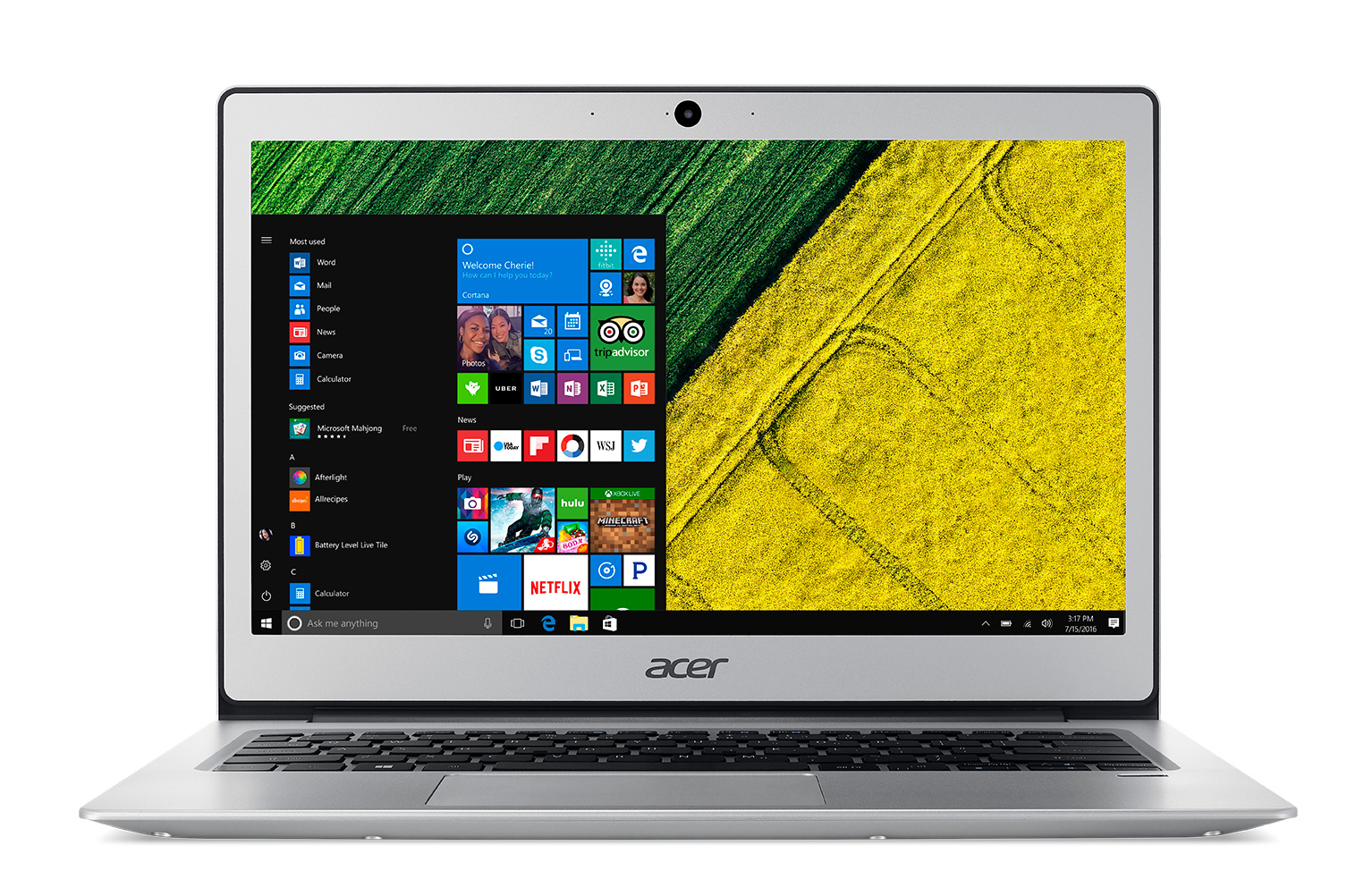
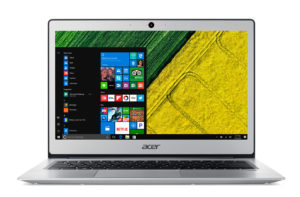
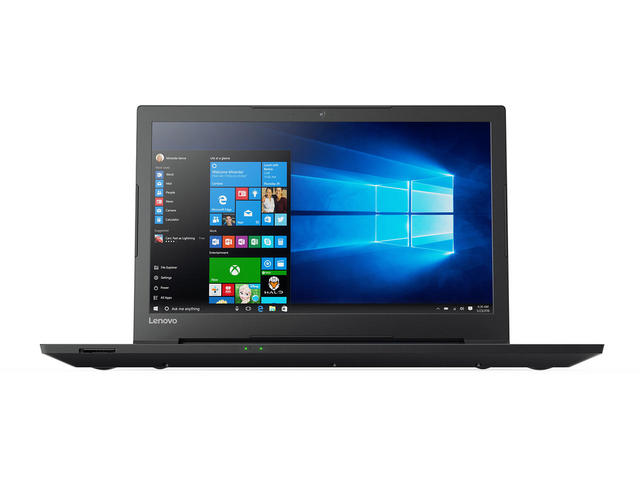
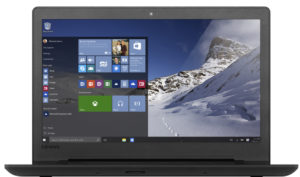









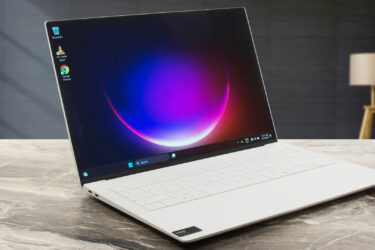
Am I able to add a second 4GB RAM memory? Would be nice!
You can’t. RAM is soldered.
Thank you for your reply
Acer has chosen a 3-cell battery with a capacity of 3770 mAh Li-ion. The work duration in an autonomous mode is impressive. All tests are conducted with screen brightness set to 120 cd/m2 and Power Saver mode turned on.
It is not easy to find the replacement battery of AP16A4K, only a small quantity to offer.
Can i change the SSD? my Swift’s SSD is corrupted and i dont know if i can change it